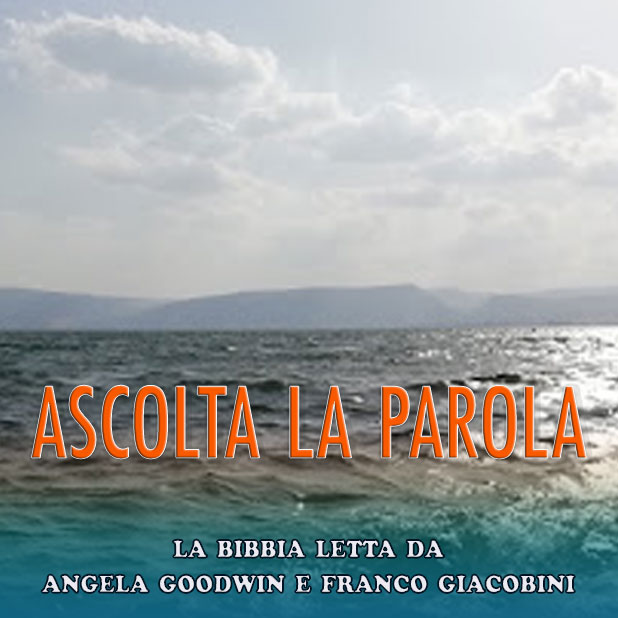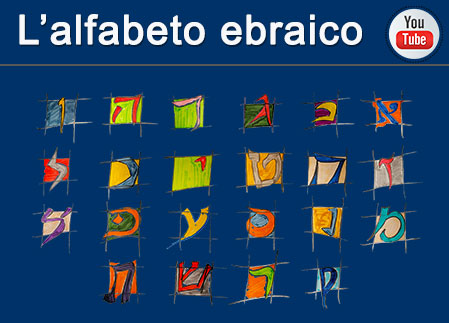Riccardo di Segni
Italia 17/01/2010
GREETINGS TO THE POPE (RABBI RICCARDO DI SEGNI)
1. First, my greetings and thanks to Pope Benedict XVI, Bishop of Rome, for his act of visiting our Community’s most important place of worship.
2. When a new Pope was elected, his pontificate began with a solemn procession through the streets of Rome. The Jews of the city were also required to take part in this procession, decorating part of the route. The decorations included large laudatory panels. Their contents were known but no one in recent times had seen them until not long ago, when a casual discovery in the archives of our Community brought to light a collection of fourteen of these cardboard placards, dating back to the eighteenth century. We have had them restored and organized a special exhibition in our museum. During his visit today, the Pope will be the first person to view these panels. They are a piece of our history as Roman Jews in our two thousand year old relations with the church, just like the historic event taking place today. However, the difference in meaning is great. The panels were the tribute due as barely tolerated subjects, living walled in and limited in their freedom. There were worse ceremonies before the eighteenth century panels: the display of the Torah to the Pope, who reserved the right to deride it. Times have obviously changed and we thank the Lord, Blessed is He, who has brought us an era of freedom. After the liberty conquered in 1870, ever since the time of Vatican II, our relations with the Catholic Church and its Pope are based on terms of equal dignity and mutual respect. It was the advances of the Council that made this relationship possible. Should they be called into question the possibility of dialogue would no longer exist.
3. The area of Rome that the Jews had to decorate was near the Arch of Titus. This was no accidental choice; it was meant to remind the Jews of their humiliation in the loss of their political independence. However, for us that symbol was never only negative: the Jews were humiliated and without independence, but they continued to live, while the empires that had subjected and defeated them no longer existed.
4. To this miracle of survival, the miracle of the regained independence of the State of Israel was added. Twenty-four years have passed since the historic, unforgettable visit of Pope John Paul II to this Synagogue. At the time, our community leaders made a strong request to the Pope to recognize the State of Israel, and diplomatic relations were established not long afterwards. It was a further sign of changing, more mature times. The State of Israel is a political entity, guaranteed by the right of nations. But in our religious vision, we cannot avoid seeing a design of Providence. The terms “holy land” or “promised land” are commonly used, but with this language, there is a risk of forgetting the original meaning. The land is the land of Israel, and in Hebrew it is literal not the land which is holy. Instead, it is eretz haQodesh, the land of He who is Holy. And the promise is the one that G-d made repeatedly to our patriarchs, Abraham, Isaac and Jacob, to give it to their descendents, the children of Jacob-Israel, who actually held it for long periods of time. This is a basic, unassailable fact in the Jewish consciousness and it is important to remember that it is based on the Bible to which, despite the different interpretations, is given a holy meaning by you and by us.
5. There is an ample, significant representation of our Community, together with representatives of external institutions here to welcome Pope Benedict XVI. But perhaps the memories and biographies of each person are more important than the institutions. They are a living, impressive document of Jewish history of the last century. I would like to mention a few names, and hope the others will forgive me. Referring only to the rabbis present, we have Rabbi Brudman, Chief Rabbi of Savion in Israel, who spent three years of his childhood being moved from one concentration camp to another, Rabbi Schneier of New York who was a child in the horrors of Budapest in 1944, Rabbi Shearyashuv haKohen, Chief Rabbi of Haifa who fought in the Israeli War of Independence in 1948 and was a prisoner of the Jordanians, and Rabbi Arussi, Chief Rabbi of Kiryat Ono, descendent of a family that emigrated from Yemen to Israel. And thinking of our own community, we have a diminishing group of survivors of the death camps of Nazi Germany. I would like to emphasize that their story is not only one of suffering but also one of resistance and loyalty. Some of them might have been saved if they had renounced their faith. But they did not. I would like to quote the simple, touching testimony of Leone Sabatello, who recently passed away.
“At the Military College, where they held us after the round-up of October 16, they asked us if anyone was Catholic, or was willing to become Catholic. Some said yes, but in our family we gathered together and remained what we always are.”
6. “We remained what we always are.” It is this force, this tenacity, this bond that has made our Community great and makes it grow. We are living in a season of rediscovery of our tradition, of study and observance of the Torah. Our schools are growing, as are our religious services, and the number of synagogues that multiple throughout the city. And all this takes place amidst our full integration in the city, in a spirit of friendship, of welcome, solidarity and open-mindedness.
7. Inhis visit to this Synagogue, Pope John Paul II described the relationship between Jews and Christians as that between brothers. The narrative of Sefer Bereshit, Genesis, gives us some precious suggestions for understanding. As Rabbi Sachs explains, from the beginning to the end of the book, there is leitmotif tying together the different stories. The relationship between brothers starts out badly, with Cain killing Abel. Another pair of brothers, Isaac and Ishmael, live separated, the victims of an inherited rivalry, but are united in their gesture of compassion when they bury their father Abraham. A third pair of brothers, Esau and Jacob, have an equally conflicting relationship, they meet for a brief reconciliation and an embrace and then their roads separate. Finally, there is the story of Joseph and his brothers, which begins dramatically with an attempted murder and sale into slavery but is resolved with a final reconciliation when Joseph’s brothers admit their error and give proof of their willingness to sacrifice themselves one for the other. If ours is a relationship of brothers, we should ask ourselves quite sincerely what point of this journey we have reached, and how far we still have to travel before we recover an authentic relationship of brotherhood and understanding, and what we have to do to achieve this.
8. What we should and can do together. Here is an example. There is a great deal of talk today about the need to protect the environment. On this point, we have a very special, common vision to transmit. The obligation to protect the environment was born with the first man. Adam was placed in the Garden of Eden with the duty “to work it and to guard it” (Gen. 2:15). We must remember that the word nature never appears in the Jewish Bible as an independent entity, but only the concept of the created and creatures. We are all creatures, from rocks to human beings. Francis of Assisi’s Canticle of the Creatures is rooted in Biblical spirituality, particularly the Psalms. For that reason, we can all agree on a non-idolatrous project of ecology, without forgetting that summit of the creatures is man, made in the Divine image. Our responsibility is to protect all of creation, but the sanctity of life, the dignity of man, his freedom, his need for justice and ethics are crucial commodities to be safeguarded. These are the Biblical imperatives that we share, together with that of mercy: living one’s religion with honesty and humility, as a powerful instrument of growth and human support, without aggressiveness, without political exploitation, without turning it into an instrument of hate, exclusion or death.
9. The terrible responsibility of man. Our Sages often used powerful images to express their thought, seeking allusions in the language of the Holy Scriptures. There is a phrase from Exodus (15:11) that says “Who is like you among the powers, baelim, O Lord.” Rabbi Ishmael, a witness of historic atrocities, and himself a martyr of the repression of Hadrian, read this phrase with a small variation: bailemim, “who is like you, O Lord, among the mute,” who witnesses the disasters of the world and does not speak. The silence of G-d, or our own incapacity to hear His voice in the face of the world’s evils are an inscrutable mystery. But the silence of man is on a different level; it makes us wonder, it challenges us, and neither does it escape justice.
Jews, Christians and those of other faiths have been and still are persecuted around the world for their beliefs. Only He who is the Lord of forgiveness can forgive all those who persecute us.
9. Despite a dramatic history, the unresolved problems, and the misunderstandings, it is our shared visions and common goals that should be given pride of place.
The image of respect and friendship that emanates from this encounter must be an example for all those who are watching. But friendship and brotherhood must not be exclusive or opposed to others. This is particularly true for all those who acknowledge the spiritual legacy of Abraham. Without exclusion, Jews, Christians, and Moslems are called to this responsibility of peace. The prayer that is raised in this Synagogue is the one for universal peace announced by Isaiah (66:12) for Jerusalem, kenahar shalom ukhnachal shotef kevod goi. “Peace to her like a river and the glory of the nations like a flowing stream.”
Thank you. Shalom.
239 visualizzazioni.
Inserito 17/04/2010
Relazioni Ebraico-Cristiane
Ultime novità nel sito
- 19/04/2020: Articolo - L’enigma della Maddalena
- 23/02/2020: Articolo - Il locus amoenus nelle catacombe ebraiche e cristiane di Roma
- 16/02/2020: Articolo - Il profetismo nel Vicino Oriente antico
- 13/02/2020: Articolo - I Profeti della Cappella Sistina
- 09/02/2020: Articolo - Gerusalemme e la Terra Santa di Israele


